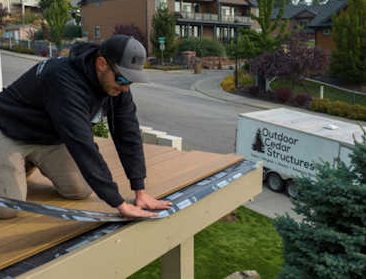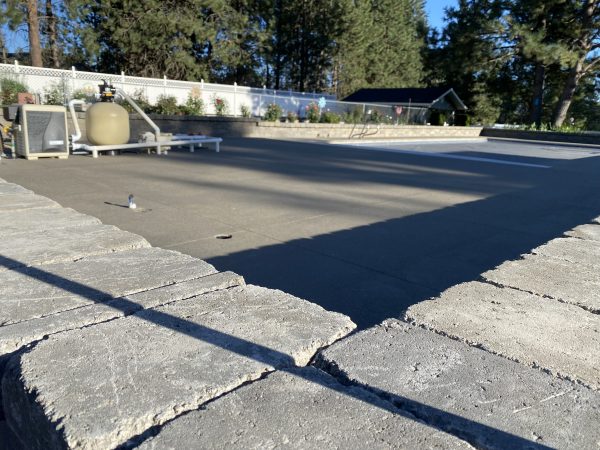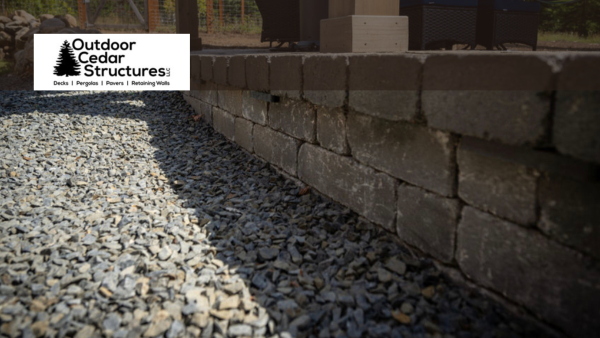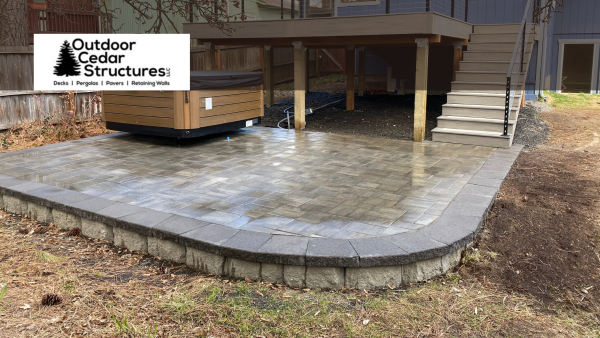Are you wondering how to build a retaining wall and what type of retaining wall to choose for your home in Spokane?
There’s a lot to consider — including the natural terrain of your property, your landscaping plans, and additional features you might want to incorporate.
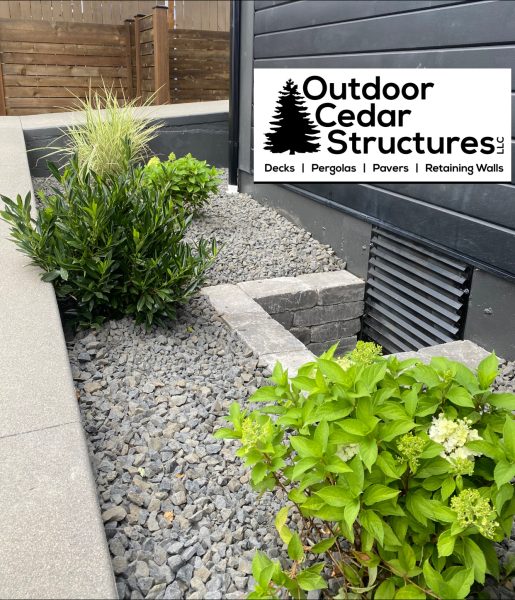
The many online resources showing how to build a retaining wall on a slope might make the task seem easy to DIY.
But if you want to ensure precision and avoid expensive mistakes, it’s best to leave the job to professionals.
At Outdoor Cedar Structures, we pride ourselves on being CMHA Certified segmental retaining wall installers.
In this blog, we share our expertise on selecting an appropriate retaining wall design and navigating the construction process efficiently.
We also answer a common question:
How much does a retaining wall cost?
Let’s get started!
Retaining walls defined
Before anything else, it’s essential to understand: What is a retaining wall?
As its name suggests, a retaining wall retains or holds back the soil behind it for erosion control and terracing. Retaining walls are practical for converting hilly or sloped areas into usable space.
Beyond this, they also enhance the aesthetic appeal of your outdoor environment by keeping it well-defined while giving you more freedom to get creative with your landscaping.
How does a retaining wall work?
A retaining wall can create immense pressure behind it as it holds back tons of soil. This is why it must be well-constructed with sufficient-drainage. Otherwise, water pressure can make it fall apart.
Outdoor Cedar Structures has the experience and knowledge required to undertake this project. Being a locally owned contractor means we are familiar with the latest building codes and standards for runoff and erosion concerns in the Spokane area.
Choosing a retaining wall
Don’t focus only on picking the most durable material when choosing a retaining wall. It would help if you also thought about aesthetic aspects.
After all, the retaining wall is a functional element and an integral part of your landscape’s visual appeal. The key is to pick a material that suits your design goals without compromising function or cost.
Below are some of the common types of retaining wall materials:
- Segmental Concrete blocks: Did you know some concrete blocks are specifically designed for building sturdy retaining walls? These high-quality interlocking blocks have a flange on their backside to neatly slip over the course below, making the structure slightly slope backward as you lay one class after another.
- Boulder: You can’t go wrong with a boulder wall if you want a natural look for your landscaping design. Pick a raw, beautiful material that complements natural hardscaping features. That said, it’s important to note that building a boulder retaining wall differs from creating other types of walls.
- Pressure-treated wood or timber: These materials are often used in limited-budget settings, and the wall’s longevity is not essential.
Other things to consider when choosing the right retaining wall design.
Be sure to look beyond the materials when planning your retaining wall. Several critical factors come into play to ensure you choose a design that suits your needs and environment. Here’s what to consider:
1. Cost
How much does a retaining wall cost? The price will ultimately depend on the finish, height, style, length, access, and local engineering requirements. From our experience, most wall projects cost between $45 and $85 per face foot squared.
Rest assured that Outdoor Cedar Structures offers transparent pricing, so you never have to worry about surprise expenses.
We also provide clear guidance and support throughout the process — from choosing the right design to understanding how to build a retaining wall.
2. Location
You’ll need a professional to evaluate critical aspects such as ground conditions, nearby utilities, elevation changes, property boundaries, existing vegetation, and nearby structures.
Using this comprehensive assessment as a guide, you can choose the most suitable materials, dimensions, and types of walls for your specific situation.
We also recommend conducting soil tests to determine your soil’s suitability for supporting a retaining wall. Organic soils decompose over time and are less ideal as they could undermine the wall’s stability and cost you more money.
3. Retaining wall design
Retaining wall design is crucial as a project of this scope is often a major investment in the longevity and functionality of your property. Selecting a material that complements your surroundings and can be designed to meet the particular load requirements of your project is where consulting with a professional can save you time and money in the future.
How to build a retaining wall
Outdoor Cedar Structures is an expert at how to build a retaining wall on a slope and other challenging surfaces. You can count on our team to handle all the details and deliver a flawless installation.
Being a local company, we’re knowledgeable about the inland northwest landscape of Spokane, Washington. This allows us to offer many opportunities to create decorative and functional retaining walls for homes and commercial settings.
Schedule your free design consultation with the experts by calling (509) 329-6054.

